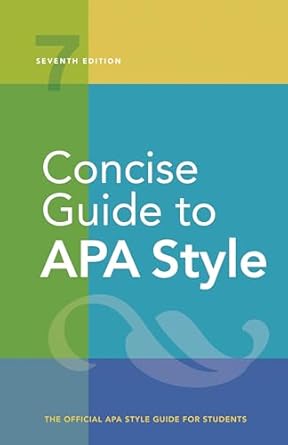[toc]
writing perfect reviews a referencing guide
Concise Guide to APA Style: 7th Edition (OFFICIAL)
Page 294 Review
The Art of Critique: A Deep Dive into Reviewing Entertainment
In the vast landscape of media consumption, reviews serve as crucial compasses, guiding audiences through the overwhelming sea of books, films, TV shows, and albums.
These critiques, disseminated across journals, magazines, newspapers, websites, and blogs, offer insightful perspectives and shape our engagement with art.
Let’s delve into the anatomy of a review, dissecting its structure and purpose, as outlined in academic referencing guidelines.
The Framework of a Review Reference
According to established standards, the reference format for a review mirrors the format of the content it resides within.
This ensures consistency and clarity in academic and professional contexts.
The defining characteristic of a review reference is the inclusion of specific details about the item being evaluated, enclosed within square brackets immediately following the review’s title.
As the text states:
“The reference format for a review should be the same as the format for the type of content appearing within that source, with the addition of information about the item being reviewed in square brackets after the review title.”
This bracketed information is not merely a decorative addition; it’s a vital component providing context and attribution.
Deconstructing the Bracketed Details
Within the square brackets, the text instructs us to specify the nature of the work being reviewed (e.g., film, book, TV series episode, video game).
Crucially, the title of the work should follow in sentence case, adhering to specific formatting rules depending on the medium.
The source material notes:
“Within the square brackets, write ‘Review of the’ and then the type of work being reviewed (e.g., film, book, TV series episode, video game); its title (in sentence case, described in Section 5.7; see also Section 9.19 for whether to format the title in italics or quotation marks); and its author or editor, director, writer, and so forth, with a designation of role for all except regular authors of books.”
Following the title, the creator(s) of the work are identified, along with their respective roles (author, editor, director, writer, etc.).
This ensures proper credit and allows readers to understand the creative forces behind the work.
Examples in Action
The text provides templates for constructing references for different types of reviews.
A book review, for example, would follow this format:
Reviewer, |(2020). | Title of | [Review of the book Periodical | https:// A.
A. (2020, | review /| Book title, by A.
A.
Title, doi.org/ May 3).
Author]. 34(2), XXXXX [Review of the book (ers https:// Book title, by E.
E.
Blog Title. | xxxxxx Editor, Ed.].
Similarly, a film review would adhere to this structure:
[Review of the film Film title, by D.
D.
Director, Dir].
And a TV series episode review:
[Review of the TV series episode “Epi-sode title,” by W.
W.
Writer, Writer, & D.
D.
Director, Dir].
Case Study: A Film Review Example
The document illustrates this process with a concrete example:
Mirabito, L.
A., & Heck, N.
C. (2016).
Bringing LGBTO youth theater into the spotlight [Review of the film The year we thought about love, by E.
Brodsky, Dir.].
Psychology of Sexual Orientation and Gender Diversity, 3(4), 499-500. https://doi.org/10.1037/sgd0000205
This reference details a review of the film “The year we thought about love,” directed by E.
Brodsky.
The review, titled “Bringing LGBTO youth theater into the spotlight,” appeared in the journal *Psychology of Sexual Orientation and Gender Diversity*.
Citation Styles: Parenthetical and Narrative
The text also highlights two common citation styles: parenthetical and narrative.
The parenthetical citation for the example above would be:
(Mirabito & Heck, 2016)
While the narrative citation would be:
Mirabito and Heck (2016)
The Significance of Precise Referencing
In conclusion, understanding the nuances of review referencing is paramount for academic integrity and effective communication.
By adhering to these guidelines, writers and researchers ensure accurate attribution and provide readers with the necessary information to locate and evaluate the sources used in their work.
The detail and format of these review references highlight the importance of precision and consistency in academic and professional writing, contributing to the credibility and clarity of the communication.
These seemingly small details are crucial for the ongoing dialogue within the world of arts and entertainment criticism.
Buy full ebook for only $18: https://www.lulu.com/shop/american-psychological-association/concise-guide-to-apa-style-7th-edition-official/ebook/product-rmzpq54.html?page=1&pageSize=4
Writing Perfect Reviews A Referencing Guide
Read more: Mastering Title Case: Capitalization Rules Explained

